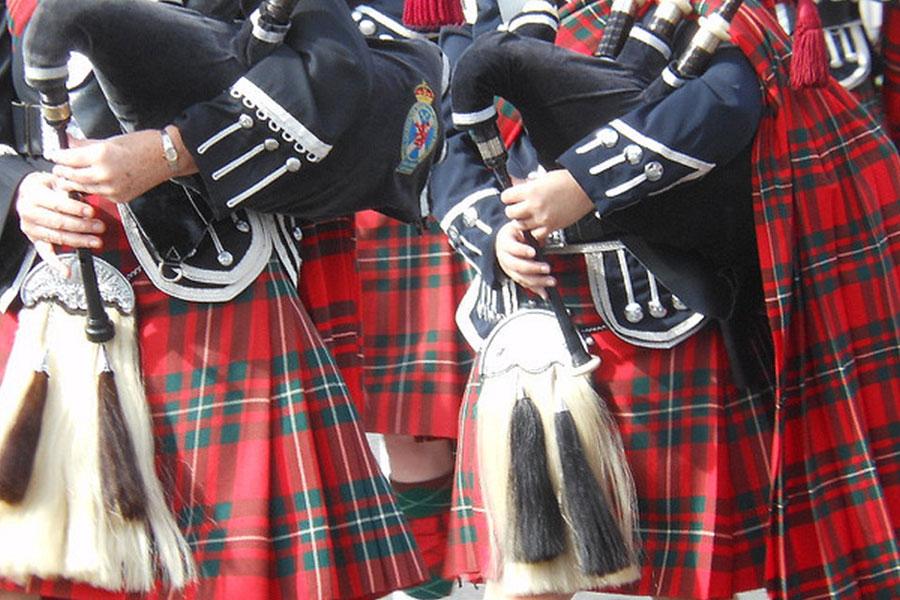This content provides an introduction to the rich heritage of Scottish military traditions. It highlights the iconic aspects of Scottish military history, such as the Highland Regiments and the traditions of Scottish warriors. It also emphasizes the significance of bagpipes in Scottish military culture and their continued presence in ceremonies and events. The content concludes by mentioning the various ways in which the legacy of Scottish military traditions is commemorated today, including the Edinburgh Military Tattoo and museums and historical sites throughout Scotland. Overall, this content showcases the enduring valor and spirit that defines Scottish military heritage.
From Kilts to Bagpipes: The Rich Heritage of Scottish Military Traditions
Introduction
Scotland, the land of rugged landscapes, deep lochs, and rolling hills, is not only renowned for its natural beauty but also for its rich military traditions. Over the centuries, the Scottish military has embodied bravery, honor, and resilience, earning a formidable reputation on battlefields around the world. From the iconic kilts to the stirring sound of bagpipes, Scottish military traditions have left an indelible mark on history.
The Highland Regiments
One of the most iconic aspects of Scottish military heritage lies in the Highland Regiments. These regiments were formed in the late 17th and early 18th centuries and played a crucial role in British military campaigns. Dressed in their distinctive kilts, sporrans, and feather bonnets, the Highland soldiers struck fear into the hearts of their opponents.
The Highland Regiments symbolized Scotland’s identity and fierce warrior spirit. Notable regiments include the Black Watch, the Cameronians, and the Gordon Highlanders. These regiments played vital roles in various conflicts, such as the Napoleonic Wars, Boer Wars, and both World Wars. Their sacrifice and bravery in the face of adversity continue to be celebrated today.
Scottish Warrior Traditions
Scottish warriors were known for their exceptional combat skills and unwavering loyalty. The tradition of clans, where families grouped together under a chief, fostered a strong sense of unity and kinship that translated into battle. From the mighty Highland charge to the intricate art of sword fighting, Scotland’s warriors employed various tactics to overcome their enemies.
Moreover, Scottish warriors were trained in the art of using traditional weapons such as claymores, targes, and dirks. These weapons, often adorned with intricate engravings and clan symbols, were an integral part of Scottish military traditions. Even in modern times, these weapons continue to be displayed with pride during ceremonial events, reinforcing the enduring legacy of Scottish warriors.
Bagpipes: The Sound of Courage
No discussion of Scottish military traditions would be complete without mentioning the haunting sound of the bagpipes. The bagpipes have been played on Scottish battlefields for centuries, serving as both a source of inspiration for soldiers and a means of communication. The stirring melodies of traditional Scottish tunes could be heard echoing across the battlefield, rallying troops and instilling fear in the enemy.
The skirl of bagpipes became synonymous with Scottish military prowess. It evokes a sense of pride and determination, reminding us of the sacrifices made by Scottish soldiers throughout history. To this day, the bagpipes maintain their prominence in military parades, funerals, and commemorative events, paying tribute to the indomitable spirit of Scottish warriors.
Legacy and Commemoration
The legacy of Scottish military traditions lives on through various commemorations and events. One of the most notable is the Edinburgh Military Tattoo, where military bands from all over the world come together to perform incredible displays of skill and precision. This annual event showcases the unwavering dedication of the Scottish military and attracts visitors from across the globe.
Additionally, museums and historical sites throughout Scotland provide a window into the rich heritage of Scottish military traditions. Places like the National War Museum of Scotland and the Culloden Battlefield allow visitors to delve into the history, uniforms, and weapons of Scottish soldiers.
Conclusion
From the kilts donned by Highland regiments to the resonating sound of bagpipes on the battlefield, Scottish military traditions have stood the test of time. Scotland’s warriors, known for their bravery and unwavering loyalty, have left an indelible mark on history. The Highland Regiments, the art of sword fighting, and the skirl of bagpipes all contribute to the rich tapestry of Scottish military heritage. As we continue to honor and remember the sacrifices made by Scottish soldiers, their legacy lives on, reminding us of the valor and spirit that defines the Scottish military tradition.
